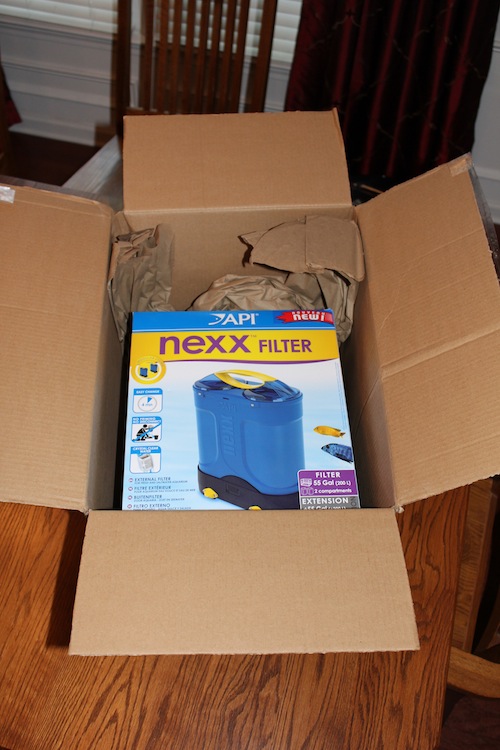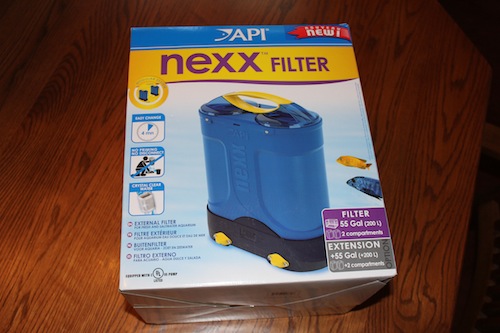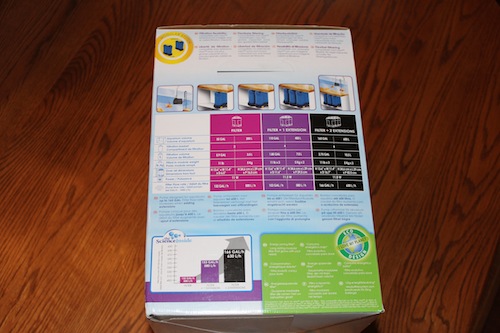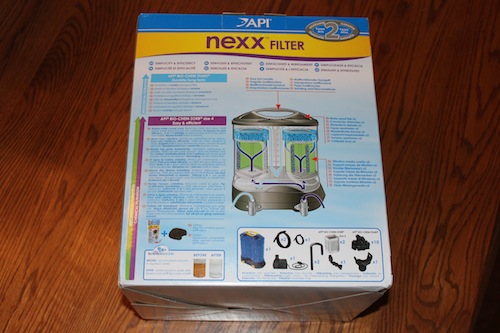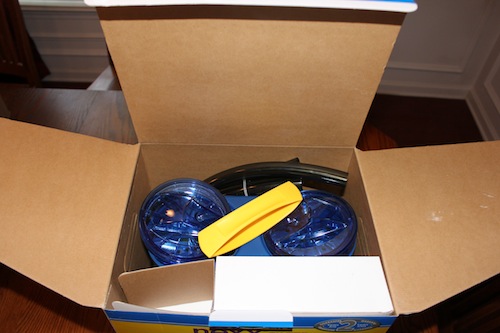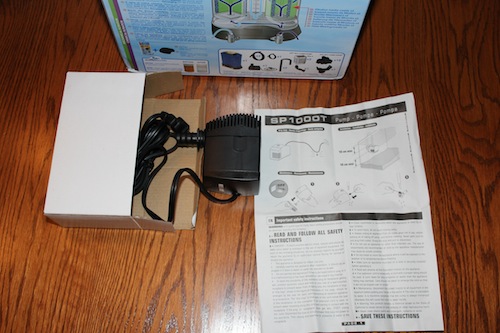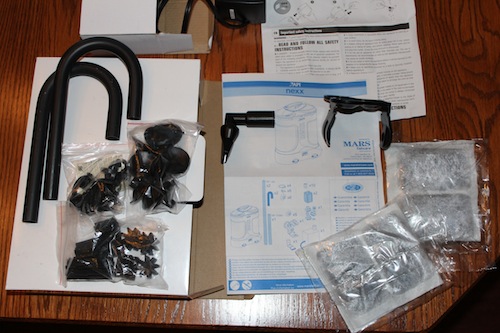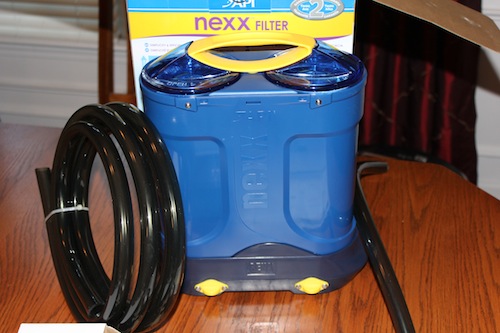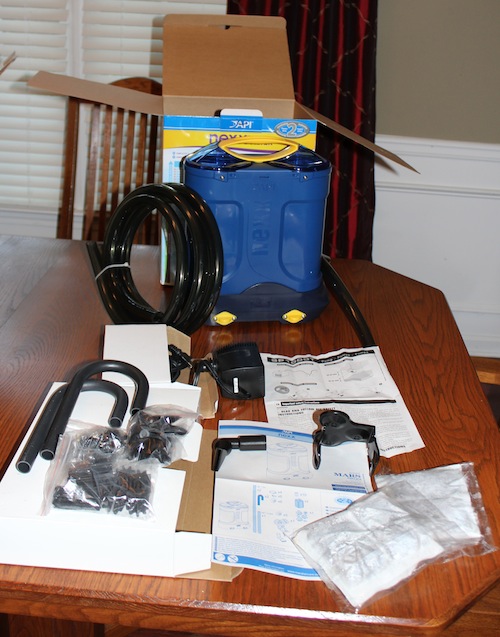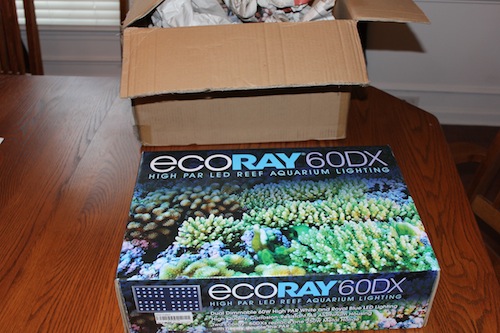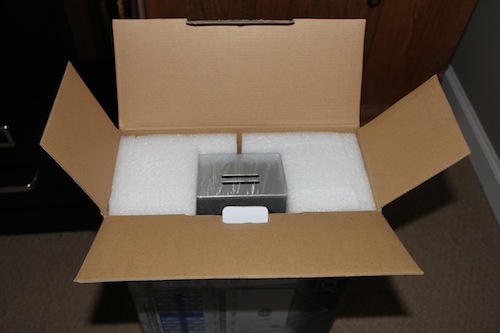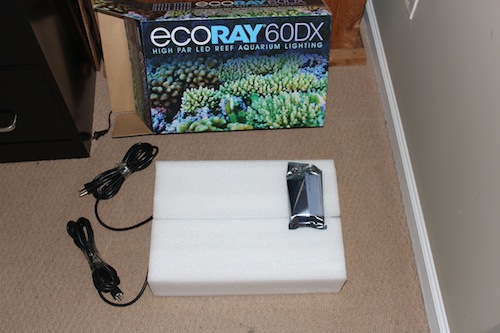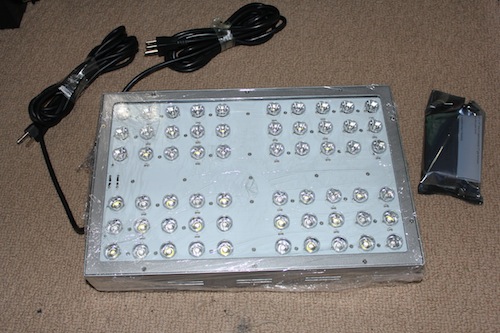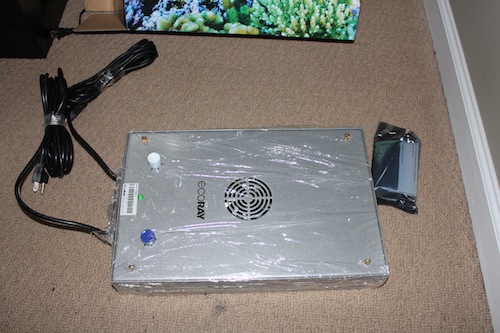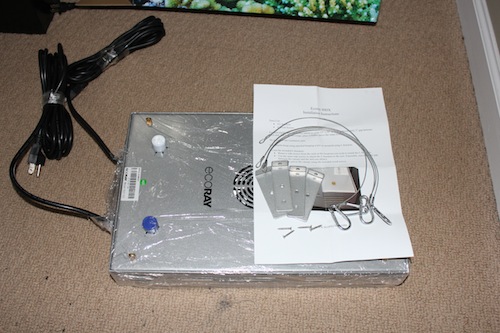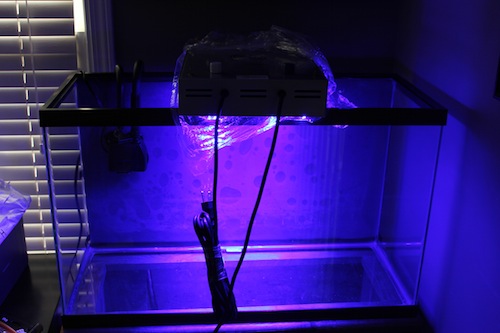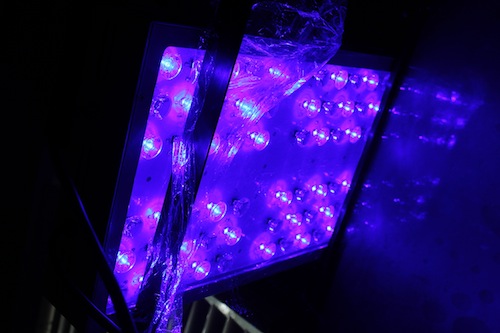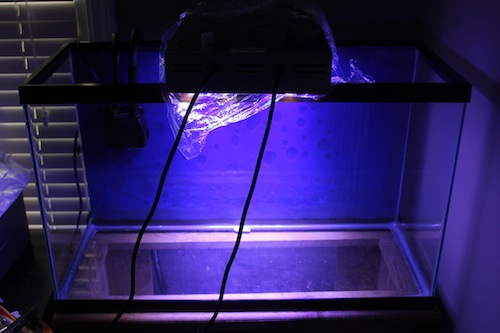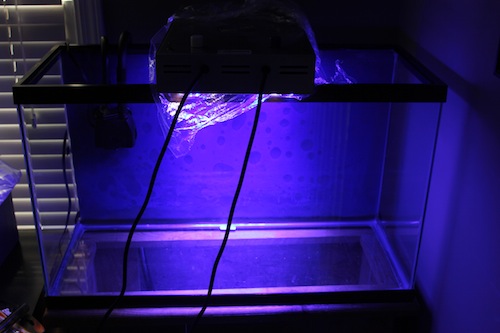The API Nexx canister filtration system has arrived! All of the pieces and steps to start setting up my new 30 gallon saltwater aquarium at Aquarium Tip Tank are coming together! You can hear all about my filtration selection process in Aquarium Tip Tank Podcast 008. Included here are some pictures of unpacking the API Nexx canister filtration system, and some videos about setting up the filtration system an putting some filter media into it!
Update: We do not currently recommend the API Nexx Canister Aquarium Filter. It leaked when I first set it up for my aquarium system check. Somehow, I got it to work for 4 days without any leaks during the system check. Then, I drained the aquarium, put live sand into the tank, put live rock into the tank, filled the tank up with saltwater and re-started the API Nexx Canister Filter. A few hours later I went to check on the tank only to find a puddle under the tank stand. The API Nexx Canister Filter was leaking from the base. I have removed the filtration system from the tank while it is cycling. I am in contact with representatives from RENA and will post updates with the outcome.
The side of the box that the API Nexx Canister Aquarium Filter comes in shows that it has a modular design and 2 extensions are able to be added to the base filter in order to accommodate aquariums that are larger than 55 gallons. Each extension is rated for another 55 gallons of aquarium filtration. Therefore, with just the base unit you get 55 gallons of filtration. With the base unit and 1 extension the canister filtration system is rated for 110 gallons. With the base unit and the maximum of 2 extensions, the API Nexx Canister filtration system is rated for 165 gallons.
The back of the box that the API Nexx Canister Filter comes in shows a diagram of how the water flows through the system with a by-pass free circulation for complete water flow through the filter media.
The API Nexx Canister Aquarium Filtration system was packaged well with all of its components well padded from shipping mishaps.
Everything that was supposed to be in the box was there! Nothing was missing, and now its time to set my aquarium filtration system up! In order to do this and show it to you I made a little video presentation and submitted it as my first video on YouTube! I also embedded it below!
This is a fairly rough video. I think there are a few things that I would do differently. Hopefully, my videos will get better as I make more aquarium tutorial videos for all of you! Enjoy!
As for putting filter media into the API Nexx Canister Filtration system, I made another movie! I think it may have turned out a little bit better than the one above. I figured out how to get some HD out of it. It is on YouTube at the Aquarium Tip Tank YouTube Channel, and we’ve also embedded it for you below! Enjoy!
As you can see, setup and filter media installation of the API Nexx Canister Aquarium Filter is quick, and easy!
Grab your Aquarium Canister Filtration system now:
- Base Filter From Amazon: API Nexx Canister Filter
- Extension Filter from Amazon: API Nexx Canister Filter Extension
- Mechanical/Chemical filtration media screens/pouches from Amazon: API Nexx Bio-Chem Zorb Sz 4 Note: Size 4 is what works with API Nexx Filter.
- Biological/Chemical filtration media stars from Amazon: API Nexx Bio-Chem Stars
If you have any questions please let us know. What do you think? Leave comments below!
TJ


